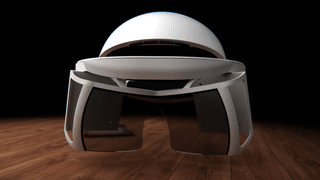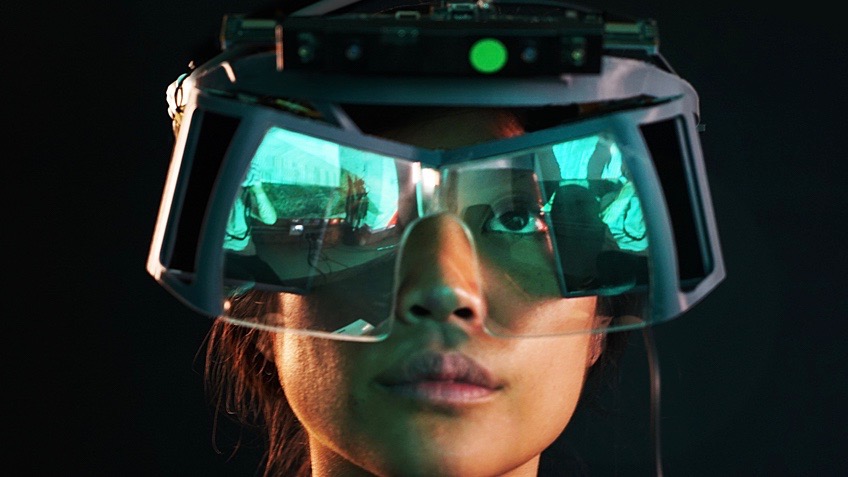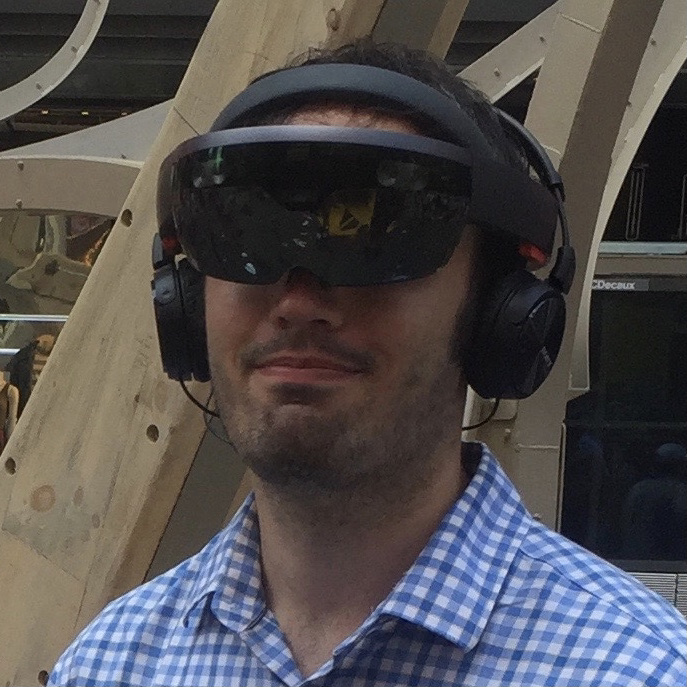Leap Motion reveals a weird-looking, ultra-affordable augmented reality headset

Why spend lots of money on a Microsoft Hololens when you could spend $100 (about £71 / AU$130) on another headset instead?
Leap Motion, the controller-free VR sensor and gesture recognition developer, announced Project North Star today, its open-source development kit for an AR headset that it claims will only cost $100 per headset to build.
That's compared to HoloLens, an AR headset that costs $3,000 (£2,719 / AU$4,369) to buy.
Considering North Star’s specs, that price tag seems almost unbelievable. Each of the headset’s two 3.5-inch screens has a 1600 x 1440 resolution with 120 fps performance and a 100-degree field-of-view.

These headsets come paired with Leap Motion sensors used for tracking your hands in real time.
The hand tracking supposedly runs at 150 fps, and at 180 degrees both horizontally and vertically. Unless you put your hands behind your back, North Star can track them.
working on something new pic.twitter.com/IyQgRLNBdbFebruary 27, 2018
By contrast, Microsoft’s developer site says that the HoloLens’ “maximum supported resolution” is 1268 x 720, and that its recommended frame rate for holograms is 60 fps. Plus, the field of view only covers 70 degrees. We’ll see if Microsoft feels any pressure to improve those specs after seeing North Star.
Sign up for breaking news, reviews, opinion, top tech deals, and more.
Leap Motion won't sell Project North Star to consumers directly. Instead, company CEO David Holz says it will “make the hardware and related software open source” starting next week, and let developers make their own cheap AR headsets based on the North Star template.
Of course, the AR headsets that eventually go on sale could be much more expensive than $100.
In another blog post, Holz says Leap Motion is working on adding other features, including inward-facing embedded cameras for eye and face tracking, ambient light sensors, directional speakers for localized audio feedback, and general design revisions.
Altogether, these new features could make the price leap (pun intended) closer to HoloLens territory.
'Virtual Wearables'
The sudden pivot to hardware development aside, Leap Motion primarily focuses its research on gesture recognition software.
Prior to today’s announcement, Leap Motion’s Creative Director Keiichi Matsuda tweeted out several short teasers of some of the company's newest hand-tracking tech.
cube! pic.twitter.com/ydZaPYxSxTMarch 8, 2018
Leap Motion's biggest reveal was its design for “virtual wearables”, user interfaces designed for AR that will have you tapping on thin air to control your apps instead of tapping controller buttons.
Introducing Virtual Wearables pic.twitter.com/LPvknKBlnOMarch 22, 2018
In an interview with Fast Company, Leap Motion discussed how its AR interface focuses on “naturalism” and “physicality”, letting users feel like they’re tapping on something familiar in everyday life, like a virtual smartwatch or tablet.
“Our hands are our original interface with the world, and foundational to any immersive experience,” Matsuda said.
Like HoloLens, the third-party offspring of Leap Motion's Project North Star could be years in the making. But we're certainly intrigued by what we've seen thus far.
- These are the best VR headsets of the year!

Michael Hicks began his freelance writing career with TechRadar in 2016, covering emerging tech like VR and self-driving cars. Nowadays, he works as a staff editor for Android Central, but still writes occasional TR reviews, how-tos and explainers on phones, tablets, smart home devices, and other tech.